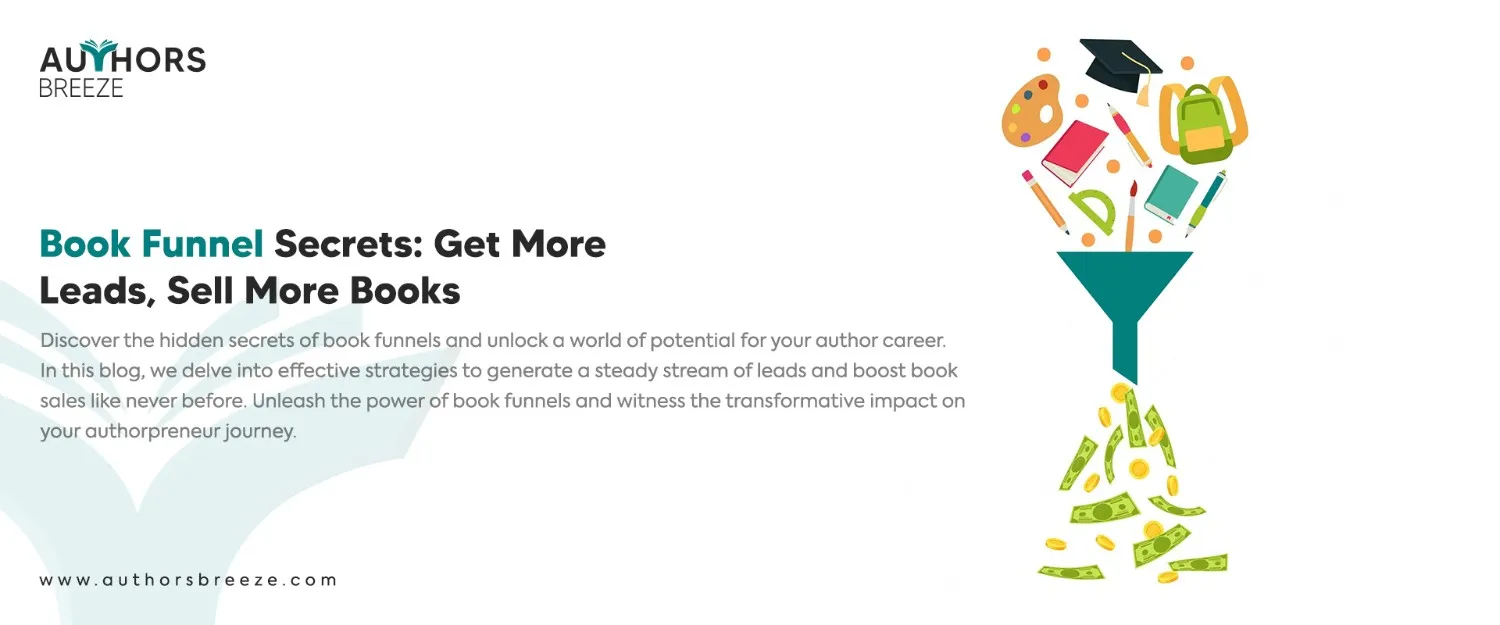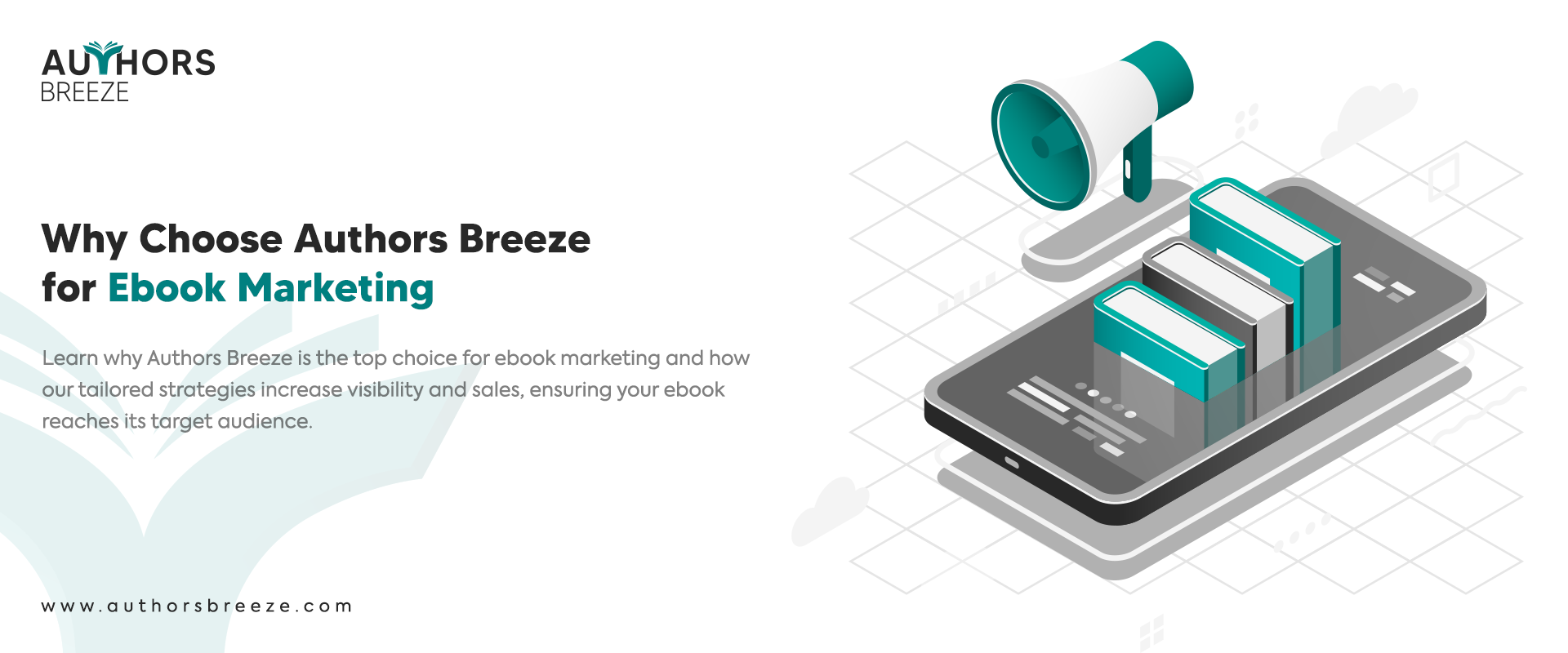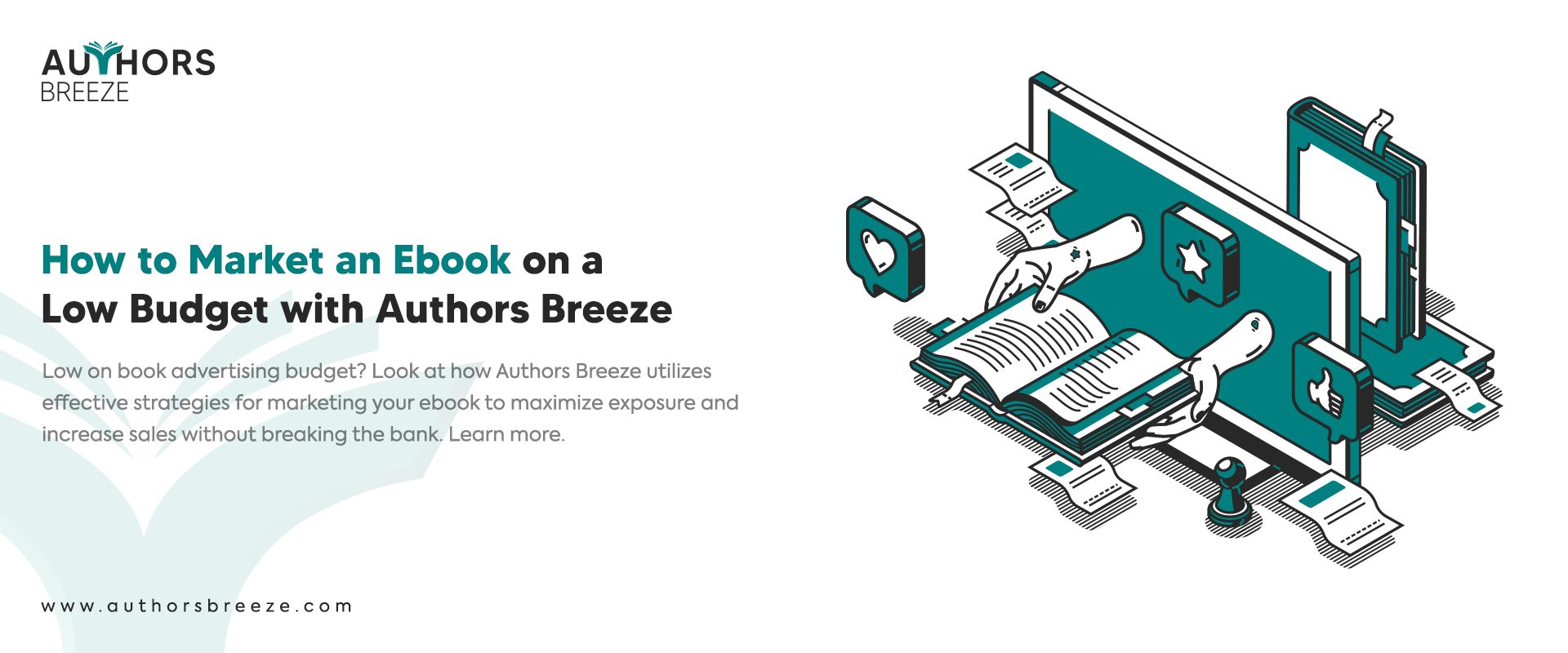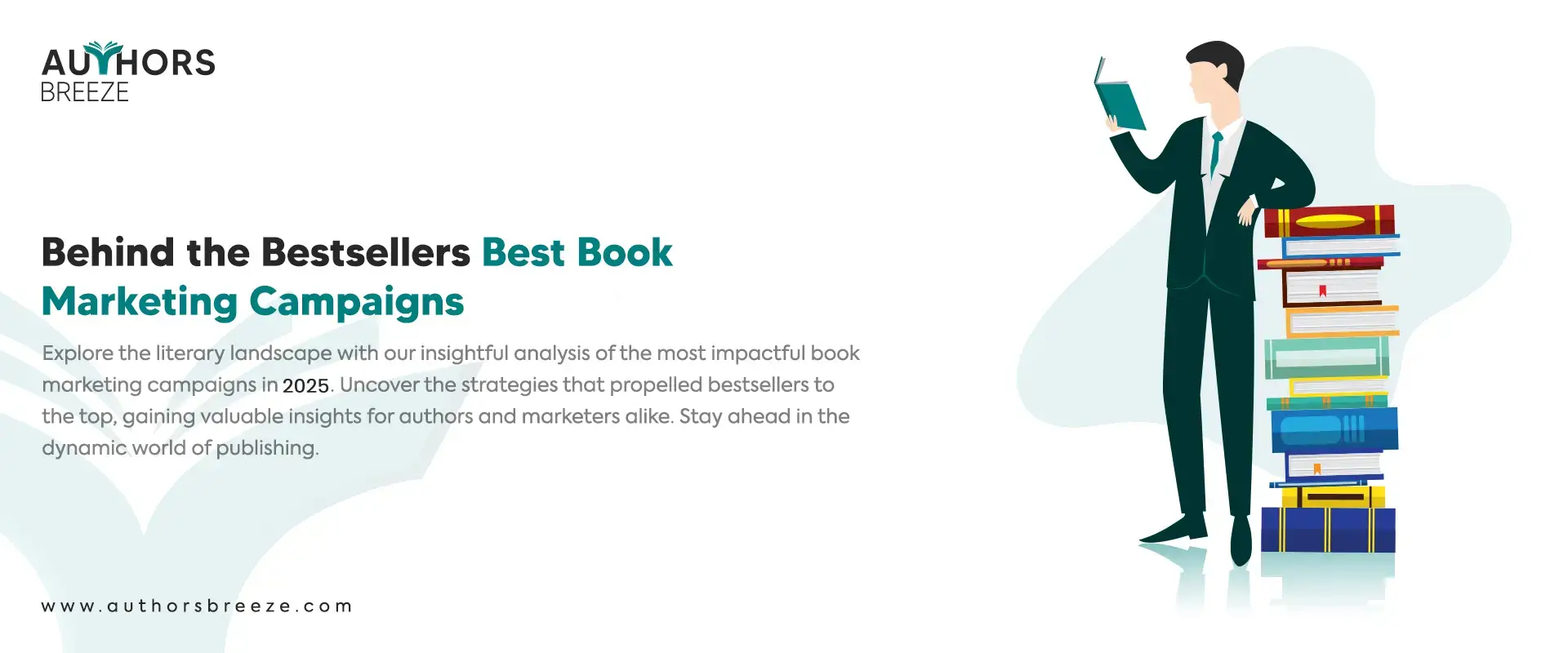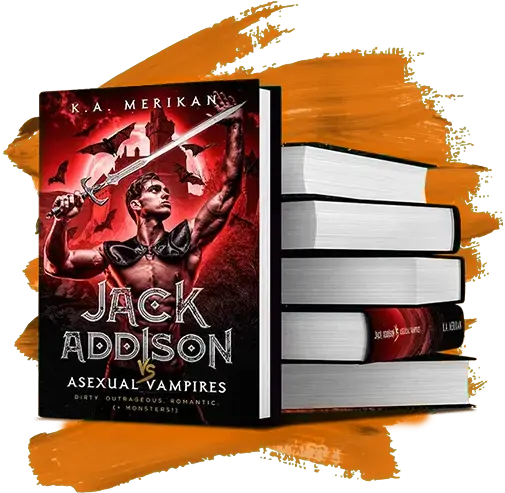Book funnels are a powerful tool for authors who want to get more leads and sell more books. A book funnel is a series of steps that guide potential readers through the process of becoming a paying customer.
A well-designed book funnel can help you:
- Generate leads
- Increase sales
- Build your email list
- Promote a book
Books are not just meant to be written but also to be read and enjoyed by readers. However, in today’s crowded publishing industry, it can be challenging for you to reach your target audience and sell your book. That’s where book funnels come in.
The Importance of Book Funnels in the Publishing Industry
Imagine a funnel—a wide opening at the top that gradually narrows down. Similarly, a book funnel is a marketing strategy that helps authors make money writing a book and attract readers and guide them through a journey toward purchasing their books. It’s like having a map that leads potential readers to discover and engage with your book.
Book funnels play a crucial role in the publishing industry because they help authors cut through the noise and stand out in a crowded marketplace. If you implement an effective book funnel, you can:
- Showcase your work.
- Build a loyal reader base.
- Increase the chances of selling more books.
The Goal: To Get More Leads and Sell More Books
The ultimate goal of a book funnel is to get more leads and sell books. Lead generation is to capture the attention and contact details of potential readers who have shown interest in your book or related topics.
If you do book positioning in the right way, people will surely be interested in your book and become the lead. These leads are valuable because they allow authors to:
- Nurture relationships.
- Build trust.
- Stay connected with their audience.
You can nurture these leads through strategic communication and providing valuable content. As a result, it can increase the chance of converting them into book buyers. In the end, the primary goal of a book funnel is to turn interested readers into excited buyers—the ones who are eager to dive into your book and share it with others.
The Benefits of Using Book Funnels
Book funnels offer several benefits for authors in the publishing industry:
- It allows authors to establish a direct link with their target audience.
- Book funnels enable authors to showcase the value and unique selling points of their books.
- They provide authors with a systematic approach to marketing books and sell them.
What are Book Funnels, and How They Work?
Think of a book funnel as a magical pathway of marketing a book that leads potential readers to your book. It’s like a series of carefully crafted steps that guide them from being curious about your book to becoming eager buyers. Book funnels are all about creating a smooth and enjoyable journey for your readers. So they can’t help but fall in love with your book.
Here’s how a book funnel works:
In a book funnel, first, you grab the attention of your target audience with book publicity and entice them with something valuable related to your book. As they show interest and engage with your content, you provide them with more helpful info and build trust. As a result, you continue to nurture the relationship. Eventually, you lead them to a point where they are eager to purchase your book and possibly explore more offers.
Components of a Book Funnel
If you understand the components of a book funnel, then you can create a seamless and effective journey for your readers.
Lead Magnet
Imagine a delicious sample at a grocery store that tempts you to try a new product. That’s what a lead magnet is. It is a tempting offer that captures the attention of potential readers and encourages them to take the first step into your book funnel. It could be a free chapter, a helpful checklist, a mini-guide, or anything that provides value and sparks their interest.
Landing Page
Once you’ve enticed potential readers with your lead magnet, it’s time to bring them to a dedicated landing page. This page is designed to showcase the benefits of your lead magnet and persuade them to provide their contact info, such as their email address. The landing page should have the following:
- An appealing layout.
- Persuasive copy.
- A clear call-to-action that prompts them to sign up.
Email Marketing Sequence
After someone signs up and becomes a lead, it’s crucial to nurture the relationship through an email marketing sequence. This sequence consists of a series of carefully crafted emails that provide valuable content, build trust, and keep your readers engaged. Each email is an opportunity to deepen the connection and guide them closer to purchasing your book.
Sales Page
The sales page is where the magic happens. It is the virtual shelf where you display your book and persuades readers to click that “Buy Now” button. On the sales page, you highlight the unique selling points of your book, share positive reviews, and create a compelling case for why readers should invest in your work. The sales page should be visually appealing and persuasive and provide clear purchasing options.
Upsells and Backend Offers
Sometimes, readers want more than just your book. Upsells and backend offers give you a chance to provide extra products or services that complement your book and enhance the experience of a reader. It could be a companion workbook, an online course, or even personalized coaching. These offers not only provide extra value but also increase your revenue.
How to Create a Sales Funnel to Sell Your Book?
A book sales funnel plays a crucial role in your book marketing plan. Let’s explore each component of a book funnel in detail and provide strategies to make them work in harmony to attract more leads and sell more books.
1. Create an Effective Lead Magnet
Identify the Target Audience and Their Needs
To create an effective lead magnet, you need to understand your target audience inside out. Think about who would benefit the most from your book and what problems or desires they have.
Choose the Right Format for the Lead Magnet
Once you know your target audience, it’s time to decide on the format of your lead magnet. Consider what format would best deliver the desired info and provide an engaging experience. It could be:
- An ebook for in-depth knowledge.
- A checklist for actionable steps.
- A video for visual demonstrations.
It could be any other format that aligns with the preferences of your audience. Also, that makes it easy for them to consume and benefit from the content. You can also hire a book publicist to help you with it.
Craft a Compelling Title and Cover Design
The title and cover design of your lead magnet is critical. It captures attention and entices potential readers to download or sign up. Create a title that is catchy, clear, and promises a desirable outcome or solution. Your professional book cover design should be visually appealing, aligned with your branding, and convey the value of the content inside. Make sure the title and design work together to make a solid first impression.
Write High-Quality Content that Delivers Value
The content of your lead magnet is what will, in the end, determine its effectiveness. Focus on quality and unique content that offers real value to your audience. Be informative, practical, and address their specific needs or challenges. Make it easy to understand and implement. Use clear and concise language. The more valuable and helpful your content is, the more likely your audience will see you as an authority and be compelled to explore more of your work.
Incorporate a Call to Action to Encourage Further Engagement
A lead magnet is not just about providing free content. It’s also a chance to nurture a relationship and guide readers further into your book funnel. So, include a compelling call-to-action at the end of your lead magnet. It encourages readers to take the next step, such as:
- Signing up for your newsletter.
- Following you on social media.
- Exploring your book.
Make the call to action clear, relevant, and easy to follow. It should provide a natural progression toward deeper engagement with your brand.
2. Build a High-Converting Landing Page
Design an Attractive and User-Friendly Layout
Your landing page is the gateway that helps you to capture leads. So it’s essential to create an attractive and user-friendly layout. Use visually appealing design elements, such as:
- Eye-catching colors
- Relevant images
- Clean typography
Ensure that the page is easy to navigate and understand, with clear headings, subheadings, and sections. Keep the layout clean and uncluttered. It allows readers to focus on the key details and the value your lead magnet offers.
Write Persuasive Copy
The copy on your landing page should effectively communicate the benefits of your lead magnet. Use persuasive language to clearly convey how your audience will benefit if they download or sign up. Highlight the key features, outcomes, or solutions your lead magnet provides. Focus on the results readers can expect. Create a sense of urgency to encourage instant action. When you showcase the value, you captivate readers and motivate them to take the next step.
Include Testimonials or Social Proof
Include feedback from satisfied readers who have benefited from your content. Display social proof, such as:
- The number of downloads
- Positive reviews
It demonstrates the popularity and value of your lead magnet. This social validation helps build trust and confidence in your offering. This makes it more likely for readers to take action. You can also pitch to the media to give reviews on your book.
Optimize the Page for Conversions
To optimize your landing page for conversions, keep the focus on the desired action. Make the call to action:
- Clear
- Prominent
- Compelling
Use contrasting colors or buttons to draw attention. Clearly state what readers need to do to access the lead magnet. Remove unnecessary distractions or links that may divert attention away from the primary goal. The page should be visually appealing, concise, and designed to guide readers seamlessly toward signing up or downloading.
3. Implement an Effective Email Marketing Sequence
Set Up an Automated Email Sequence
To effectively nurture your leads and guide them towards purchasing your book, set up an automated email sequence. It allows you to create a series of pre-scheduled emails that will be sent automatically to your subscribers. So, set up the sequence to deliver emails at strategic intervals. It keeps your audience engaged and builds a relationship over time.
Craft Engaging and Valuable Content for Each Email
Each email in your sequence should provide engaging and valuable content to your subscribers. So, share insights, tips, or exclusive info related to your book. Also, make the content relevant to the interests and needs of your readers. Keep the emails concise, easy to read, and visually appealing. You should aim to build trust, establish your expertise, and keep your audience excited about your book.
Personalize Emails Based on Subscribers’ Interests and Actions
Personalization is key. It creates a meaningful connection with your subscribers. Segment your email list based on the interests of the subscribers or actions they’ve taken. Tailor your emails to address their specific needs or preferences. Use their names in the email greetings to add a personal touch. When you deliver relevant and targeted content, you increase engagement and the prospects of conversions.
Incorporate Strategic Calls-to-Action to Drive Book Sales
Each email in your sequence should include a strategic call to action. It encourages your subscribers to take the desired action, which is purchasing your book. Whether you want to direct them to your sales page, offer a limited-time discount, or invite them to a book launch event, make the call to action aligned with the content of the email. Use persuasive language and create a sense of urgency to motivate readers to take action.
4. Design a Compelling Sales Page
Create an Attention-Grabbing Headline and Subheadings
The headline of your sales page should capture the attention of visitors right away. Therefore, craft a compelling headline that highlights the key benefit or promise of your book, just like you write a book press release to grab the attention of the media. Use subheadings all over the page to break up the content and guide readers through the key selling points. Each subheading should grab attention and provide valuable info that entices visitors to keep reading.
Describe the Book’s Benefits and Unique Selling Points
Clearly convey the benefits and unique selling points of your book on the sales page. Describe how your book solves a problem or fulfills a need for your target audience. Highlight its key features, such as:
- Practical advice
- Expert insights
- Entertaining storytelling
In addition, use compelling examples to convey the value readers will gain from your book. For example, if you are marketing children’s books, tell what kids will be learning from your book.
Showcase Positive Reviews and Testimonials
Include positive reviews and testimonials on your sales page. It adds credibility and social proof. So, display testimonials from people who have praised your book. Also, use quotes or snippets that highlight the impact your book has had on their lives. If you showcase these positive reviews and testimonials, it will help you build trust and confidence in the quality and benefits of your book.
Include Clear Purchase Options and Pricing Details
Make it easy for visitors to understand the purchase options and pricing details of your book. Clearly display:
- The different formats (e.g., paperback, ebook)
- Pricing options
- Any bonuses or offers
Provide a simple and intuitive purchasing process. So that ensures visitors can easily select their preferred option and proceed with the purchase.
Incorporate Persuasive Elements
Incorporate persuasive elements into your sales page, such as scarcity or bonuses. You can create a sense of scarcity if you mention limited stock or a limited-time offer. As a result, it can motivate visitors to make a decision sooner rather than later. In addition, offer bonuses, such as:
- Additional resources
- Exclusive access
- Companion materials
It can add value and entice readers to choose your book over others.
5. Utilize Upsells and Backend Offers
Upsells and backend offers are extra products or services that you can offer to your customers after they’ve made the initial purchase of your book. Upsells are upgrades or complementary products that enhance the value of the original purchase. On the other hand, backend offers are related products or services that you promote to customers in the future. They provide chances to increase revenue and deepen the engagement of the customers with your brand.
Identify Opportunities
Think of where you can offer more products or services that align with your book and provide further value to your customers. For example, you could offer:
- A premium version of your book with extra content.
- A workbook or journal that complements the concepts of the book.
- Or even a membership site with exclusive resources and community access.
Look for ways to extend the journey of the readers and offer ongoing support.
Design Upsell and Backend Offer Pages
Create dedicated pages that showcase your upsells and backend offers in a way that complements the main book. Design these pages to show the unique value and benefits of the products or services. Clearly explain how they build upon or enhance the experience of the readers with the original book. Use persuasive language and, compelling visuals & calls to action to encourage customers to take advantage of these offers.
Increase Revenue
Upselling and cross-selling strategies can help increase your revenue and deepen customer engagement. Consider offering upsells during the checkout process—present customers with relevant and valuable add-ons. You can also cross-sell if you promote backend offers through email marketing or within the book itself. When you strategically present offers that align with the interests and needs of your customers, you increase their lifetime value and drive more revenue for your book business.
FAQs
How Can I Analyze and Optimize My Book Funnel?
You can track key metrics using analytics tools to analyze and optimize your book funnel. To gain insights into the performance of your funnel, monitor metrics such as:
- Website Traffic
- Conversion rates
- Email open rates
- Sales data
Identify bottlenecks or areas for improvement, such as:
- Low conversion rates.
- High drop-off points.
Then, make the necessary changes. You can conduct A/B testing to test different elements and optimize conversion rates. Also, make decisions that are driven by the data to enhance the performance of your book funnel and maximize its effectiveness.
Can Authors Use Book Funnels for Self-Publishing as well as Traditional Publishing?
Yes, authors can use book funnels for both. A book funnel is basically a marketing strategy where you create a series of steps or stages to guide readers. It begins with the initial awareness of readers to purchase a book and potentially engage them in further activities.
Are There Any Specific Platforms or Tools Recommended for Building a Book Funnel?
There are several platforms and tools available that can help authors build and manage book funnels. Here are a few popular options:
- ClickFunnels
- ConvertKit
- Kajabi
Conclusion
Book funnels help you generate leads and increase book sales. They guide potential readers through a journey that captivates their interest, builds trust, and leads to book purchases. Suppose you implement a well-designed book funnel. In that case, you can effectively engage with your target audience and maximize the impact of their book marketing efforts. As a result, sell more books. So, if you are looking to expand your readership, contact Authors Breeze. Get top-notch book marketing services and boost your book sales.

